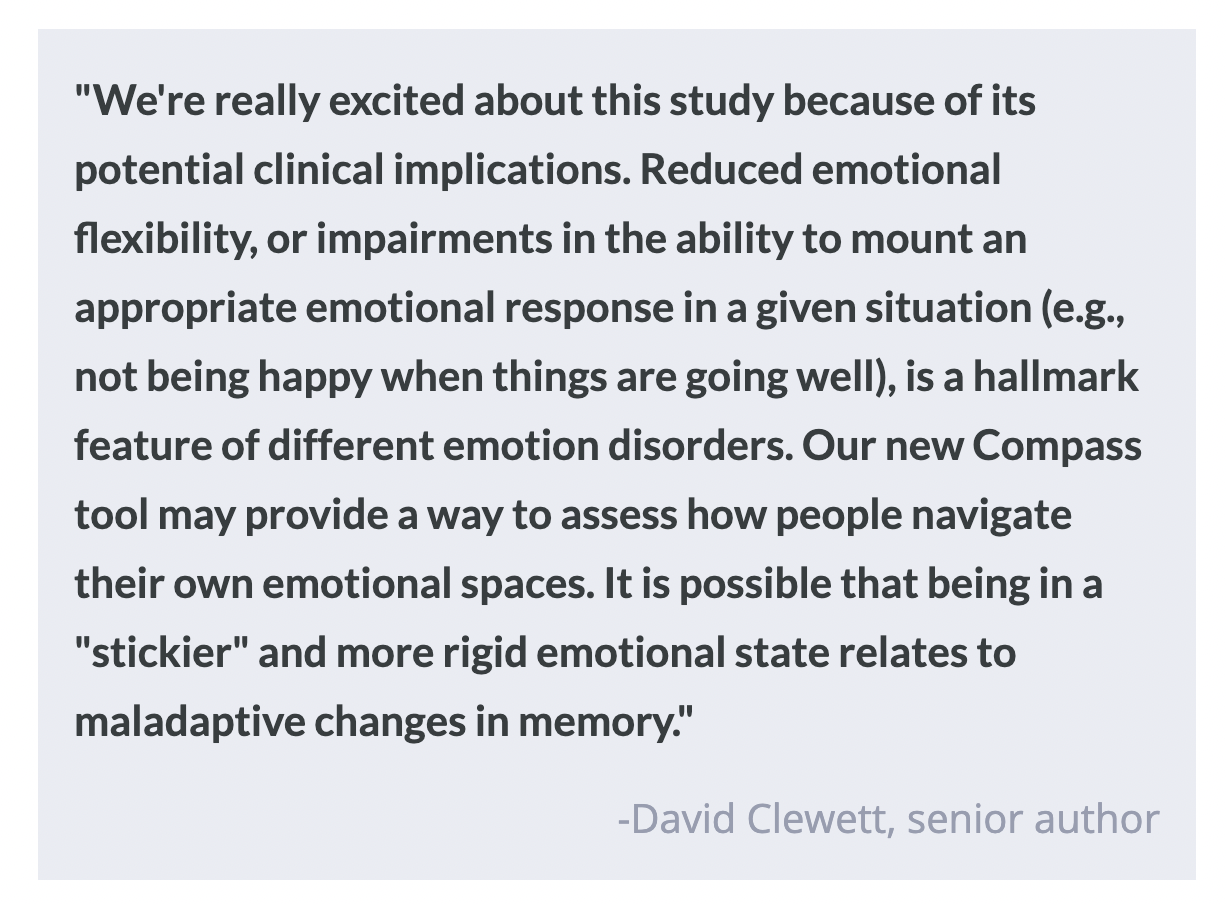Music-Induced Emotions Affect How We Encode Memories
Post by Anastasia Sares
The takeaway
Emotion and memory are tightly linked, but it is hard to measure continuous fluctuations in emotional states reliably in the lab. This work used music to reliably induce emotions across time and examined how transitions between different emotional states affect memory.
What's the science?
We are constantly processing the continuous stream of experience that happens in life, placing similar information into different “episodes” so that we can store them efficiently in memory. Transitioning into new contexts or situations can lead to uncertainty, like walking out of a building or changing conversation partners at a party, for example. Therefore, we are generally more vigilant during these times, paying more attention to what is new and having better memory for individual items. On the other hand, within an episode, we are better at remembering relationships between different items and the order of information, such as the numbers of the rooms we pass in a hallway or the order of topics in a conversation.
Most of the above examples involve external cues to signal the boundaries between adjacent events. But we also have an inner life, and we can transition between states of mind just as easily as we walk through doors or change conversation partners. In particular, we often transition between different emotional states over time. This week in Nature Communications, McClay and colleagues used music to induce different emotional states and show how fluctuations in these emotional states affect memory formation.
How did they do it?
The authors hired trained film score composers to create emotional musical pieces (choosing from joyous, calm, sad, and anxious), with each piece having three distinct sections with different emotions. These pieces were meant to induce a range of emotions according to the circumplex model of emotion, which holds that emotions can be defined along two main dimensions: arousal and valence. Arousal refers to the energy level of an emotion: high-energy emotions include joy and anxiousness, while low-energy emotions include sadness and calm. Valence refers to the positive or negative quality of an emotion: positive valence emotions include happiness and calm, while negative valence emotions include anxiousness and sadness.
Participants first listened to the pieces in the background while trying to memorize a series of neutral images. At test time, they were presented with two objects and asked which one came first, and also how far apart the objects were in time. Finally, the participants were asked to rate the emotions they felt during the musical pieces using an “Emotional Compass”, a circle that captures a wide range of emotional valence and arousal levels. Participants rated their felt emotions in real-time, moving the mouse around on the Compass while re-listening to the musical pieces. In this way, the authors could extract measures of both the valence and the arousal levels participants experienced at each point in time and could then relate this to their memory performance. They also had a separate group of participants identify musical transitions, where the pitch or complexity changed significantly, so they could factor out the influence of these external sensory boundaries in their analyses.
What did they find?
When two images were separated by a significant emotional transition, people experienced “time dilation” – in other words, they judged the images to be further apart in time than they actually were. Participants also had worse memory for the order of those images. Images that were shown at a boundary transition were better preserved in long-term memory overall (this was tested one day later). These effects are typical of the memory effects seen in previous studies, showing that our experience can be segmented according to our internal states just as much as our external context.
On the other hand, a large shift towards more positive emotions led to item pairs being judged as closer in time (i.e., “time compression”) and people remembered the order of those images better. High-arousal positive emotions also boosted long-term memory for accompanying items: participants could better identify which items were presented as well as when those items were encountered during the sequence. These findings indicate that positive emotions can help to fuse things together in memory, while either being in or shifting towards more negative emotional contexts may instead contribute to memory segmentation and worse memory for timing.
What's the impact?
This work shows that internal emotional states, especially emotional valence, can separate events in memory just like external changes in place and time. It also demonstrates that music is a useful tool for studying emotion in a continuous context in a realistic and reliable way.


